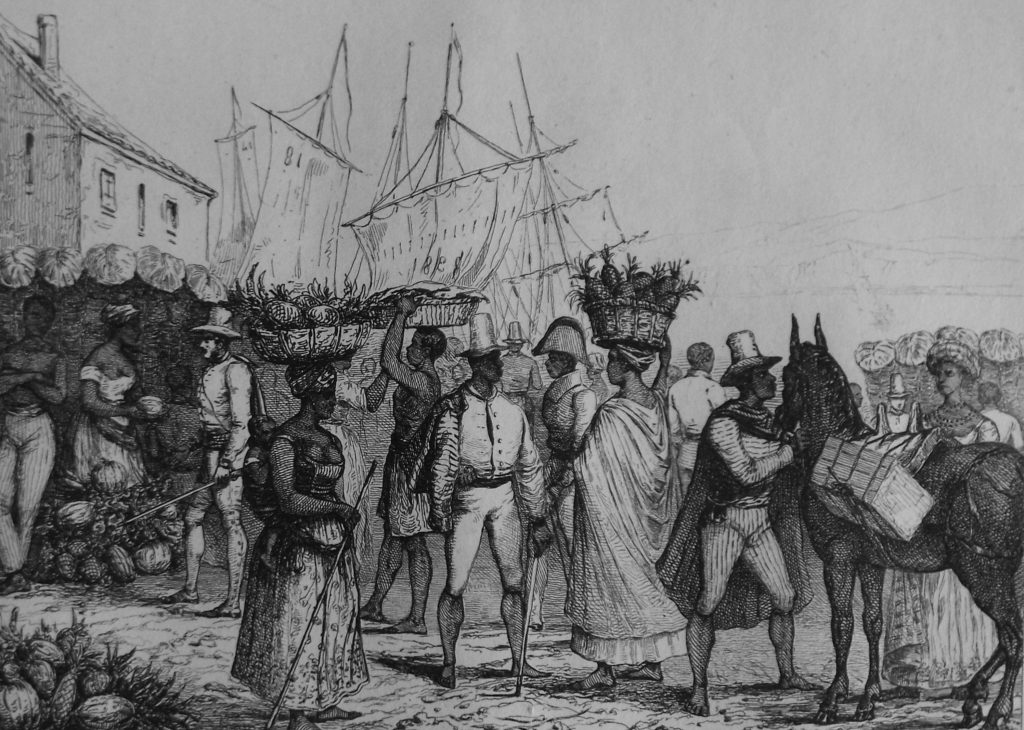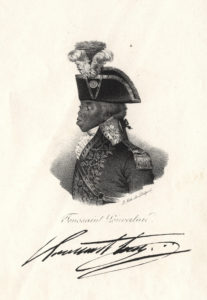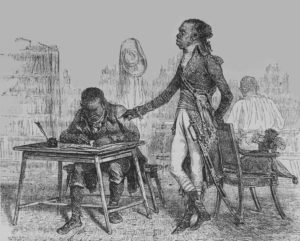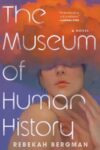Toussaint Louverture was a man of genius. A new biography by Philippe Girard, Toussaint Louverture: A Revolutionary Life, portrays the life of the leader of the Haitian Revolution, a man at the helm of the greatest slave revolt in world history. Girard, who spent years in the archives and uncovered new information vital to our contemporary understanding of Louverture, crafts an engrossing tale of family, faith, ambition, and patriotism. Louverture began life a slave, became free, and became wealthy through the ownership of lands and people. When the people of Saint-Domingue rose in revolt, Louverture was poised to lead, and the successes of the Haitian Revolution can be attributed as much to Louverture’s political canny as to his military tactics. Louverture, Girard writes, “transcended class and race to take his place among the great statesmen of the revolutionary era.”
A native of the French Caribbean, Philippe Girard is a professor of Caribbean History at McNeese State University in Louisiana. His books include The Slaves Who Defeated Napoleon, on the Haitian war of independence, and Toussaint Louverture: A Revolutionary Life.
Andrew Mitchell Davenport: Let’s talk about the mind of Toussaint Louverture. He was a brilliant man. Although he had a belated education, he was a man of the Enlightenment. One could even argue that he helped usher in a truer Enlightenment age—I’m thinking here of David Brion Davis’s “Age of Emancipation”—with his actions leading the Haitian Revolution.
Philippe Girard: The issue of whether the Haitian Revolution belongs in the Age of Enlightenment is an important one in the historiography. Scholars like Laurent Dubois have analyzed the Haitian Revolution as an offshoot of the French Revolution. Haitians on the other hand are a bit uncomfortable being lumped into a European narrative and prefer to think of their revolution as sui generis (resulting from local traditions like slaves running away, for example). Where Toussaint Louverture fits in that debate is complicated: he clearly adapted his rhetoric to the person he was talking to, so his true beliefs are hard to ascertain. But I would describe him as a man who definitely wished to take his place in the Enlightenment movement, specifically to force France to apply its principles in the colonial context, which France was hesitant to do before being forced to do so by the events in Haiti. At the same time, Louverture also suspected (rightly) that the racial prejudice was still strong and that French revolutionaries would never accept him as an equal partner; so he could have an adversarial attitude toward Enlightenment advocates he viewed as half-hearted and disingenuous, and toward the end of his life he moved toward a more anti-French, black nationalist agenda in line with what Dessalines would later do in Haiti.
You’ve walked the same streets in Haut-du-Cap as Toussaint did over two-hundred years ago. Do you believe history can be “felt” or “experienced”?
I’m a big believer in archival research, and walking “in the footsteps of history” may seem cliche, but traveling on site truly helped me be a better writer. I could have written the entire book without ever setting foot in Haiti: it was a French colony at the time, so the biggest archival deposits are in France. But I would have missed a lot, both at the practical and the emotional level. Just visiting the city of Cap (which hasn’t changed much in its layout since the Revolution) and the remnants of Louverture’s plantation in Haut-du-Cap really helped me understand the proximity of the plantation to the city and to nearby hills, and thus the many connections between Louverture and other revolutionaries from that area (chapter 6 is directly based on those experiences). I would not describe myself as an emotional person, but standing in the cell of Fort de Joux, right where Louverture died, was also a powerful experience that really made me understand his despair during the last winter of his life. I tried to convey this in chapt. 20.
Giving a paper at a conference in Port-au-Prince also gave me a better appreciation for how much Louverture means for Haitians: my paper was published in the national daily, the Nouvelliste, and sparked a conversation that was lively to put it mildly (Haitians didn’t appreciate that a French-American would dent the idealized image of their founding father by revealing some of the ideological compromises he made during his career). Academia can be theoretical at times: after spending years trying to find the “real” Louverture in old documents, it was important to understand his importance as an icon in people’s hearts today, and for that I had to be in Haiti.
You replace the well-trod phrase “triangular trade” with “mercantile octagon.” Would you speak a bit more to how the late 18th Century was truly a “globalized” world?
What struck me when studying colonial Haiti was the mixture of the ancient and the modern. When reading accounts of slaves being burnt alive or broken on a wheel, I couldn’t help but think “the colonists were barbarians from another age”. But the colony was also so modern in many ways: people were having philosophical discussions on the Enlightenment, they were flying a hot air balloon, they were thinking of using steam power on plantations. That’s what I tried to convey by the expression “mercantile octagon”: the plantations were amazingly modern capitalist enterprises that did business with places like Amsterdam (for their banking), Africa (to obtain their workers), Newfoundland (to obtain cod), and Mexico (for the silver specie). The supply chain for a loaf of sugar wasn’t that different from that of an iPhone today!
Toussaint refused to ever sit for a portrait. Why was this? And what do you find to be the best representation of Toussaint in popular media?
Louverture never explained why he would not sit for a portrait. If I am to venture a guess, it is that he was self-aware of his appearance. He was not the most handsome man, and in an age where whiteness was held at the epitome of beauty he was very dark. So I think he didn’t want his enemies to judge him by his appearance. He always paid a lot of attention to his physical appearance, doing his best to dress like the two categories of whites who were most respected in the colony: the planters (who dressed in a white cotton cloth suit) and the officers (who dressed in the tricolor uniform of the French Republic).
In terms of determining which of the existing portraits of Louverture is the most accurate, I would suggest reading David Geggus’ enlightening essay on the topic. The short answer is: “we don’t know”.
You mention a few times in the book that a recent discovery has been unearthed about Toussaint’s life. For instance, it was only a few years ago when researchers learned that Jacques Dessalines was a slave of Toussaint’s. Is this archival work still ongoing? Who is undertaking it?
The Haitian Revolution is an exciting field for historians because archives contain dozens of thousands of pages of documents, and yet many of them have not been properly researched yet. So there are still many opportunities to find groundbreaking discoveries if you are willing to put in the work (the documents are spread out in multiple archives and are written in multiple languages).
That important discovery on Dessalines is one that I and a scholar in France made simultaneously in 2012. I can’t tell you how exciting it is when you connect the dots and realize that a major figure like Dessalines was once employed as a slave by another figure like Louverture! That’s the kind of earth-shattering moment that would never happen with better studied figures like Washington and Jefferson. My findings first appeared in an article on Dessalines (“Jean-Jacques Dessalines and the Atlantic System: A Reappraisal,” William and Mary Quarterly 69:3 (July 2012), 549-582).
A growing number of scholars in the US are working on the Haitian Revolution because it is considered “hot” right now (the French and American revolutions have been studied a lot, and there is a growing realization that the Haitian one was more far-reaching). The main problem is that not all the aspiring Haitianists have the requisite language skills, so the quality of the publications is uneven. When reviewing articles or books sent by publishers, I often encounter basic mistakes in footnotes that indicate that the author doesn’t speak French. In the US, I am particularly fond of the publications of David Geggus, John Garrigus, and Jeremy Popkin, who have done some very exciting work of their own.
How did your experience at the Hutchins Center shape your biography of Toussaint? What distinguishes your biography of Toussaint from others’?
The Hutchins Center at Harvard University is truly an amazing place. It was created by Henry Louis Gates Jr., whom you may know from his PBS shows. He’s gathered funds for a top-notch research institution that invites fellows and lecturers and fosters a lot of intellectual exchanges in the field of black studies. What I like most about Prof. Gates (“Skip”) is his willingness to treat every scholar on their merits, not based on name recognition or connections. He read a previous book of mine on the Haitian War of Independence (“The slaves who defeated Napoleon”) and liked it so much that he emailed me to invite me on campus. Academia can be a very elitist institution where a person like me (who got his Ph.D. from a public university and teaches at a regional college in the South) can be dismissed outright by Ivy Leaguers. I was so incredulous that he contacted me that I initially did not respond to his email, thinking it was a hoax! Thankfully he contacted me again and the rest, as we say, is “history”.
My biography differs from others in an important aspect, its archival basis: previous biographies (and I won’t name names here) were often based on slim research, simply recycling whatever was known already. By doing extensive work in dozens of deposits, and incorporating findings made by myself and others in recent years, I was able to fill in many gaps, especially for Louverture’s early years, which were often left out by previous biographers even though he was almost 50 when the Revolution began. That greater body of evidence, in turn, allowed me in turn to craft a more nuanced assessment of his life, whereas previous works often had a strong bias for or against Louverture.
What is the greatest unsolved mystery regarding Toussaint’s life? What still haunts you?
He was a complex character who did his best to hide key aspects of his life, so there are many unsolved mysteries. There are many instances in the book where I had to make a leap of faith based on the available evidence and preface my conclusions with “probably” or “maybe”. The one issue that still haunts me is his emancipation. We know that he described himself as free by 1776, but no one knows how or when he obtained his freedom because during the Revolution he hid that fact from the general public to better pass as a true revolutionary who had risen from the ranks. I spent a lot of time in the archives looking for a smoking gun on his manumission, going through colonial records (where his manumission paper should have been filed), the correspondence between the plantation manager and the absentee owner (who should have mentioned the event), and the papers of the family notary (who should have drafted the official paper) and came up empty-handed. The conclusion I draw in the book is that he was never formally freed, which was a common practice in Haiti because owners didn’t want to pay the manumission tax, and which would explain the absence of documentation. But I would have loved to hold in my hands the manumission paper by which Toussaint Louverture, arguably the most important slave in history, obtained his freedom.
Andrew Mitchell Davenport is an editor of Full Stop.
This post may contain affiliate links.











